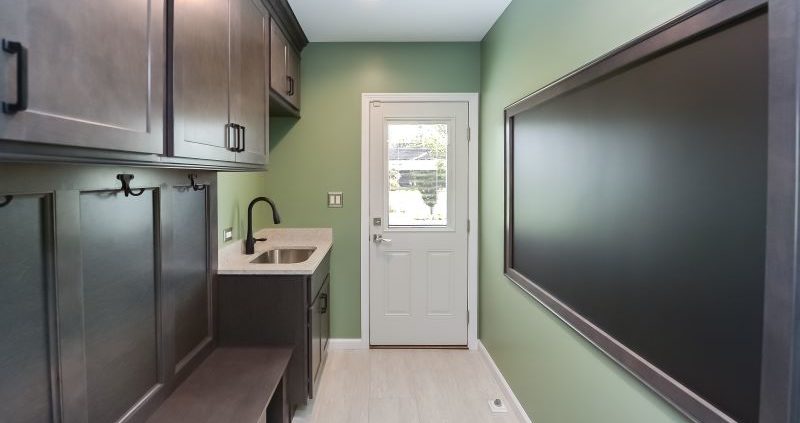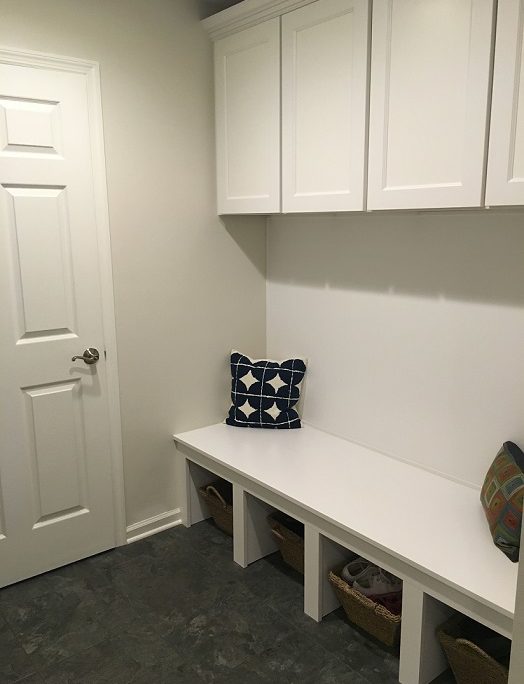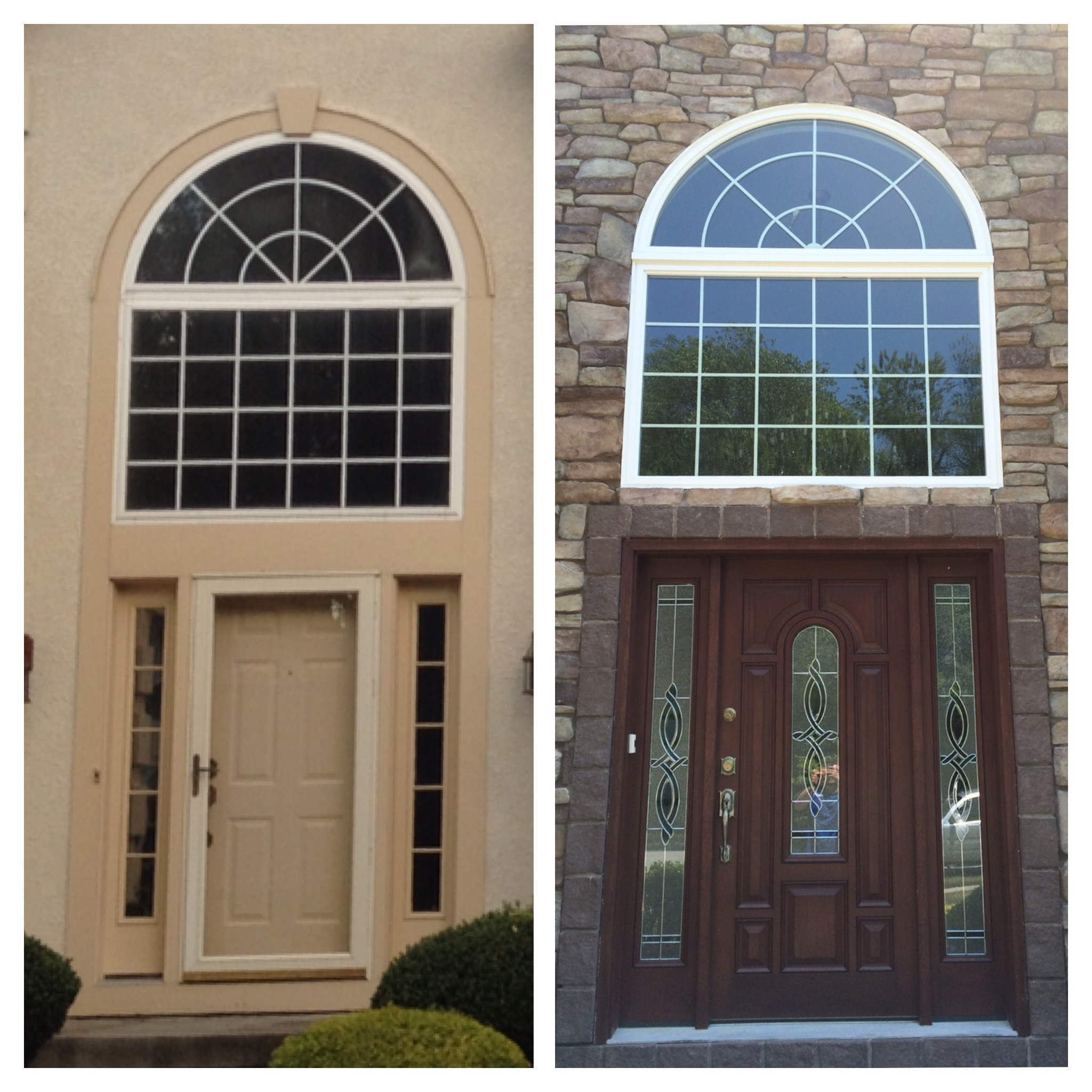Remodeling Your Garage Into A Mudroom
Talk to any avid outdoorsman or mom of active kids, and one thing would likely top their domestic wish lists: a mudroom entrance.
Unfortunately, most homeowners are reluctant to implement a handy mudroom if it means cutting into other essential spaces, such as a kitchen or a den corner.
That’s why a garage mudroom is an ideal, real-life solution. Here’s how to make it happen.
Mudroom Prerequisites for Garages
Creating a garage mudroom is a super easy way to keep your home organized and clean, especially in regions with inclement weather.
The primary advantage of having an attached garage is the direct access it provides to your home, allowing you to enter and remove the mess of dirty outdoor gear before stepping into the main living areas.
This seamless transition is the essence of a garage mudroom’s convenience and functionality.
Planning Your Garage Drop Zone
When planning a garage mudroom, consider the following elements to ensure it meets your needs effectively:
- Location: Ideally, the mudroom should be located at the entry point most frequently used by family members. This is typically the door that leads from the garage to the house.
- Storage Solutions: Incorporate various storage options such as built-in cubbies, lockers, shelves, bins, drawers, and hooks. Putting these in will help organize items like shoes and umbrellas. A bench for sitting while removing footwear is also a practical addition.
- Flooring: Choose durable, easy-to-clean flooring materials that can withstand moisture and dirt. Tile, concrete, and vinyl are popular choices for mudroom floors because they are resilient and simple to maintain.
- Drainage: If you live in an area with a lot of snow or rain, consider installing a floor drain to manage excess water that may drip off of outerwear.
- Ventilation: Good airflow will help the space dry out more quickly and reduce odors. If possible, include a window or exhaust fan in your mudroom design.
- Lighting: Adequate lighting is important in a mudroom. Overhead lighting, combined with task lighting, can make the space more functional and welcoming.
- Maintenance: Choose finishes and materials that are easy to clean and maintain. Wall finishes should be able to withstand scuffs and be washable.
For those with a detached garage, the concept of a mudroom can still be applied. You can create a dedicated space just inside a side or rear entryway of your home.
This area can serve the same purpose as a mudroom in an attached garage, helping to keep the rest of your home clean and organized.
If your home does not have an existing space that can be converted into a mudroom, you might consider a small addition.
This addition doesn’t need to be large; even a modestly sized space can function effectively as a mudroom with the right design and organization solutions.
Consider Your Mudroom Storage Needs
Before planning the space, it’s important to first understand your mudroom storage needs
Will you merely be tucking away boots, or do you need to store all of the other detritus of daily life – from laundry and gardening supplies to sporting gear?
Likely, you’ll need the latter, which is why a garage mudroom makeover is a savvy choice for many homeowners.
They’re comparatively large in square footage just waiting to be put to use in a meaningful way. Even better? Keeping recreational items in your garage helps contain clutter outside of your immediate living space.
Garage Mudroom Ideas for Storage: Sorting Your Stuff
Once you’ve assessed your space and cleaned it out, it’s time to choose tidy storage solutions for your belongings.
Going with one type of storage mechanism misses the point entirely: different types of goods require different forms of storage.
For example, coats, jackets, and backpacks can be inexpensively kept off the floor through the simple addition of a shelf, a cabinet, or wall hooks to hang on.
Just make sure to keep them at a height that’s easily accessible for smaller children. This also helps you maximize vertical space – a smart move on the part of any space-challenged homeowner.
Mounted shelving is another way to use your walls; this is the perfect way to tuck away seasonal gear, such as hats, gloves, and scarves.
Other items, such as umbrellas and soccer cleats, may not be used as frequently and can be tucked away in enclosed storage spaces, such as heavy-duty cabinets.
Just remember to keep like with like and to label everything. A truly functional mudroom is well-organized, accessible, and easy to maintain.
Some families also find it useful to designate baskets or storage closets for each family member. This way they’ll know where to look before turning to you for help finding their tennis racquet.
After all, you could probably live without ever again hearing the words, “Mom, I can’t find my lacrosse stick/ski boots/fishing pole!”
Think Up … and Down for Floor Space
We’ve already established the importance of using vertical space, but don’t forget about your floors.
When planning a garage mudroom, it’s important to select flooring that can hold up to everyday wear and tear – particularly since it will be used four seasons out of the year, and subjected to everything from sand and gravel to snow and ice.
Make sure it can be mopped with ease and is relatively scratch-proof (we recommend tile or vinyl plank flooring).
Speaking of down, don’t forget places for people to sit. If there is no place to stop and remove footwear, your home’s inhabitants will inevitably make their way into your house with their shoes on, defeating the purpose of your mudroom.
A simple bench works fine, although choosing one with storage functionality adds an element of usefulness.
Clean Up on Your Garage Mudroom Idea with Ayars
Do you have the desire to create a garage mudroom but your picture is still a little muddy? Let the team at Ayars help sort it out, and you’ll be on your way to living a cleaner, more clutter-free life.





